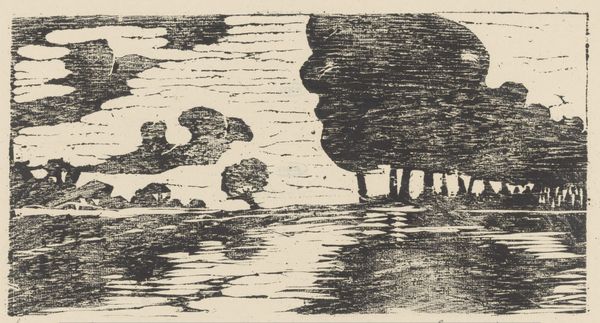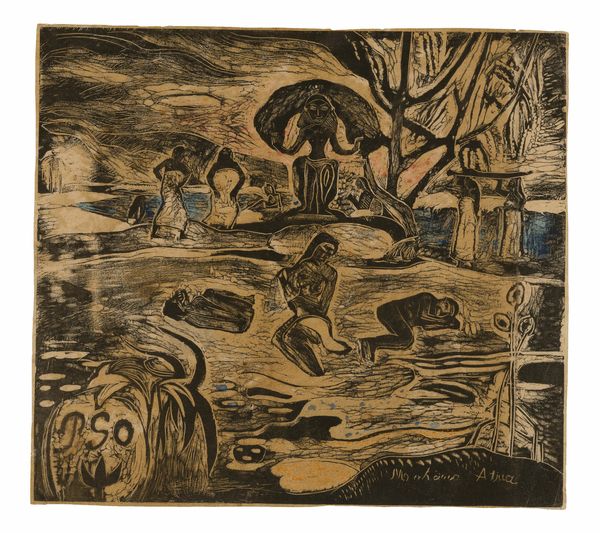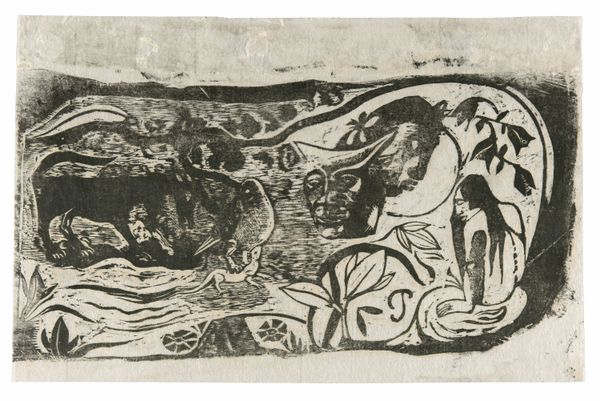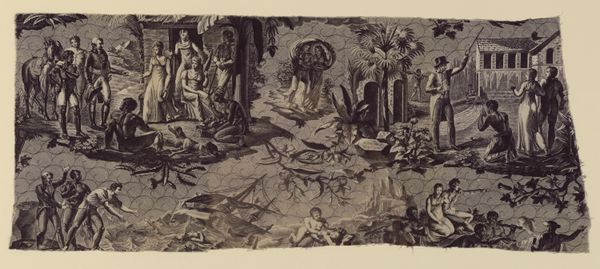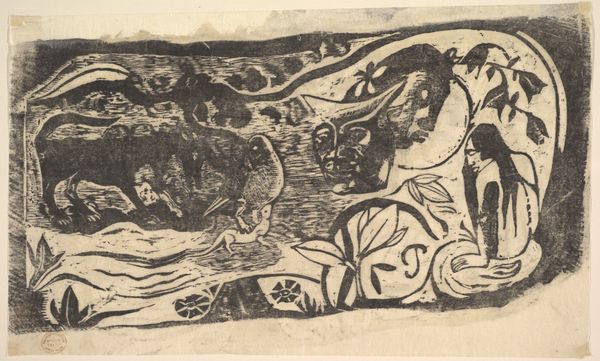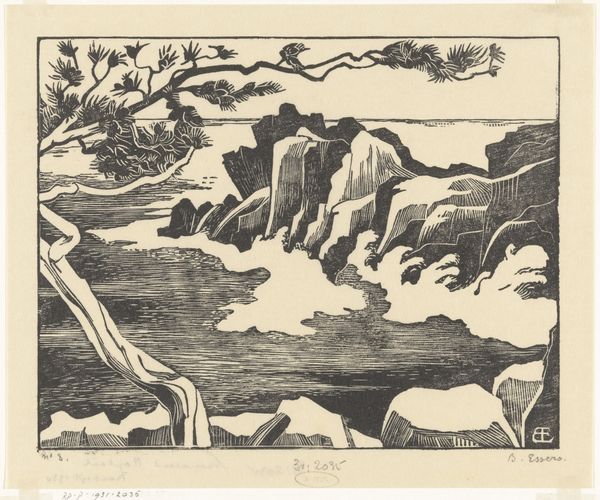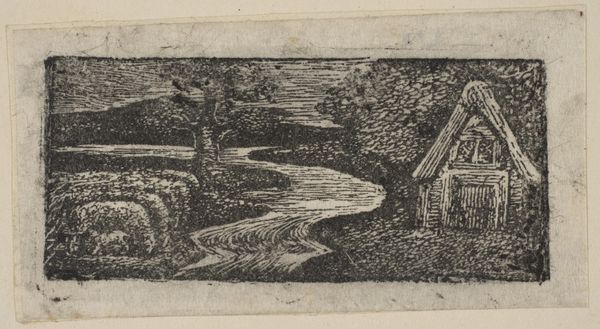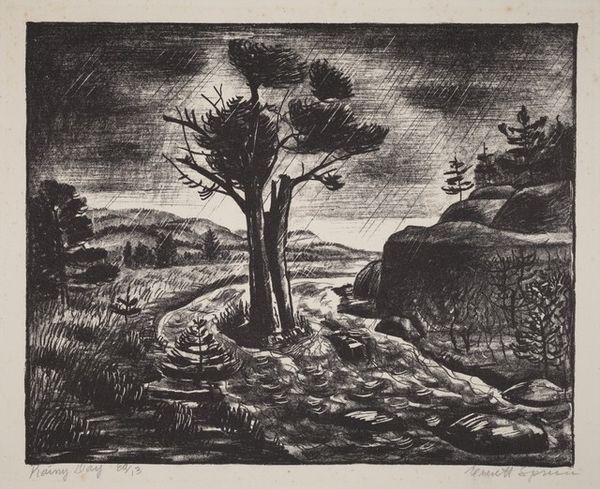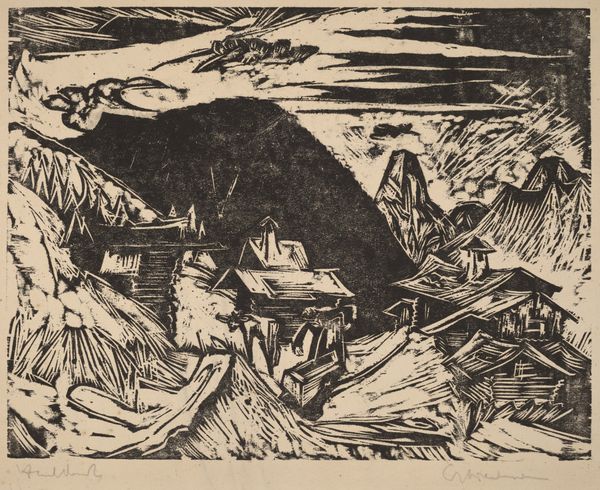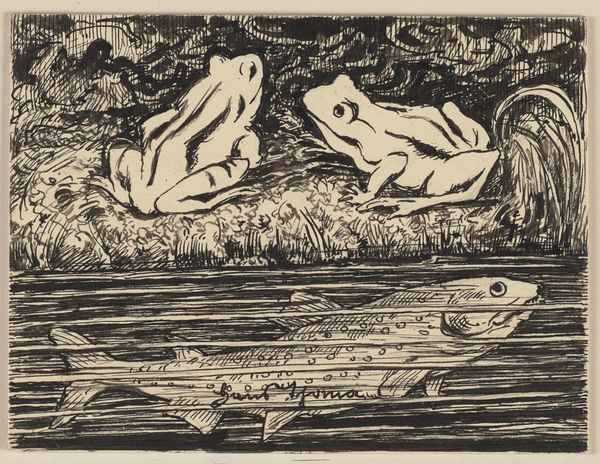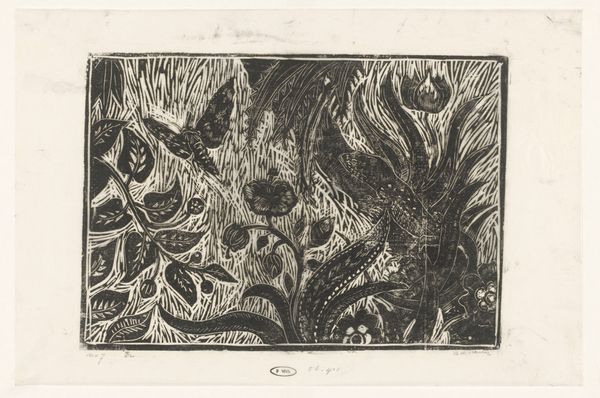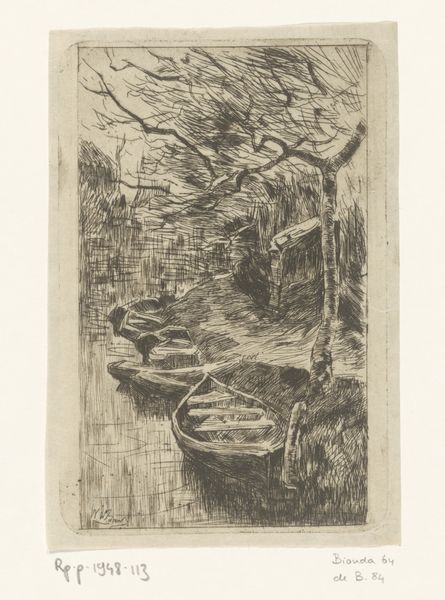
drawing, print, woodcut
#
drawing
# print
#
landscape
#
figuration
#
woodcut
#
symbolism
#
post-impressionism
Dimensions: block: 7 3/16 x 8 in. (18.3 x 20.3 cm) sheet: 10 3/8 x 17 1/8in. (26.4 x 43.5cm)
Copyright: Public Domain
Paul Gauguin made this woodcut print, "The Day of God", in the 1890s, during his time in French Polynesia. Gauguin sought an escape from the constraints of European society, finding inspiration in what he perceived as the untouched, ‘primitive’ cultures of the Pacific. The print depicts a scene of Tahitian life, imbued with Gauguin's interpretation of Polynesian spirituality. The figures, rendered with a flattened perspective and strong outlines, evoke a sense of the exotic, but also reveal a Western gaze, that romanticizes and essentializes non-Western cultures. The artist once said, "I shut my eyes in order to see". Gauguin’s work invites reflection on the complexities of cultural exchange and representation. It raises questions about authenticity, cultural appropriation, and the artist's role in shaping perceptions of otherness. Ultimately, “The Day of God” encourages us to consider how cultural narratives are constructed and whose voices are amplified or silenced in the process.
Comments
No comments
Be the first to comment and join the conversation on the ultimate creative platform.
